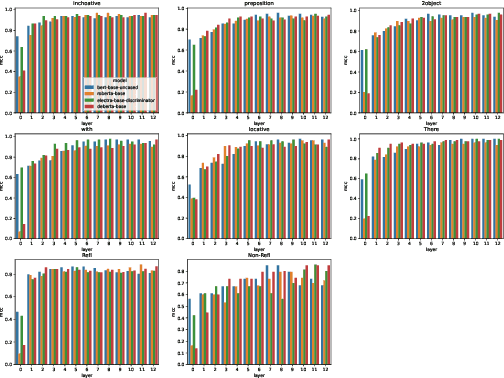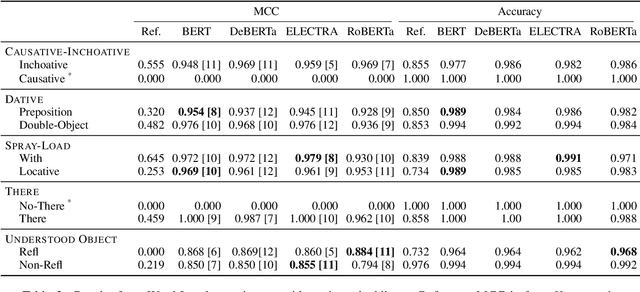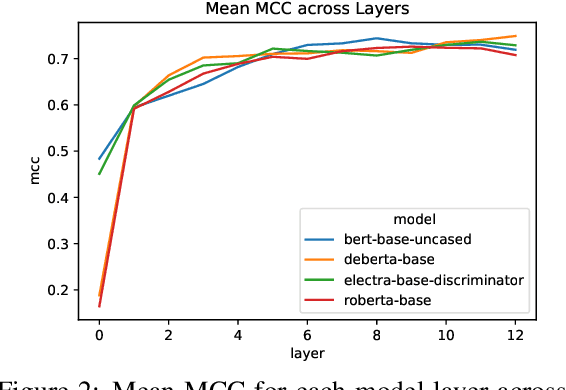David K. Yi
Probing for Understanding of English Verb Classes and Alternations in Large Pre-trained Language Models
Sep 11, 2022



Abstract:We investigate the extent to which verb alternation classes, as described by Levin (1993), are encoded in the embeddings of Large Pre-trained Language Models (PLMs) such as BERT, RoBERTa, ELECTRA, and DeBERTa using selectively constructed diagnostic classifiers for word and sentence-level prediction tasks. We follow and expand upon the experiments of Kann et al. (2019), which aim to probe whether static embeddings encode frame-selectional properties of verbs. At both the word and sentence level, we find that contextual embeddings from PLMs not only outperform non-contextual embeddings, but achieve astonishingly high accuracies on tasks across most alternation classes. Additionally, we find evidence that the middle-to-upper layers of PLMs achieve better performance on average than the lower layers across all probing tasks.
 Add to Chrome
Add to Chrome Add to Firefox
Add to Firefox Add to Edge
Add to Edge